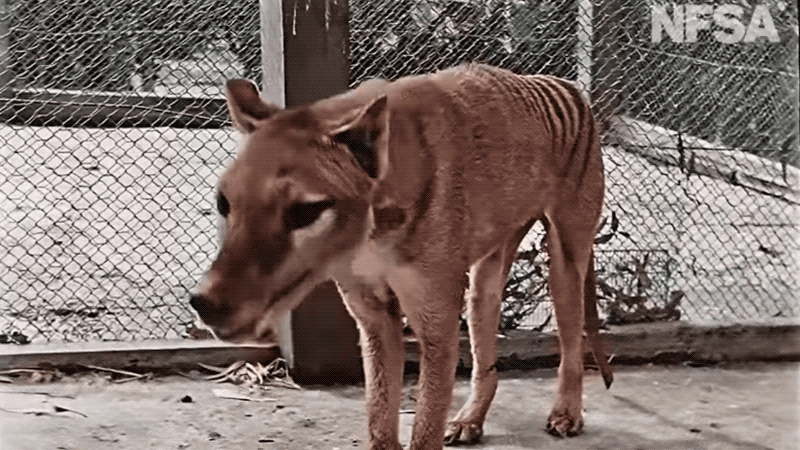A stunning renovation of 88 - class - old archival footage provides a colorized view of the last Tasmanian tiger in incarceration .
Tasmanian tigers were last seen in the 1930s , and there ’s no known footage of them in color . The only footage we have — approximately 100 second worth in full — shows specimens in captivity , all in pitch-dark - and - white . What ’s more , there ’s no known footage of them in the wild , nor are there any recordings of their vocalizations . Tasmanian tigers , also known as thylacines , are , understandably , quite mysterious .
That ’s what makes this Modern colorized footage of a Tasmanian tiger so cool . I have nothing against black - and - white photos , but seeing these marsupial carnivore in color — even if it is an approximation — make them seem more real to me , if that makes signified .

Tasmanian tiger in color.Gif: NFSA Films/Gizmodo
The National Film and Sound Archive ( NFSA ) of Australia commission the renovation to commemorate National Threatened Species Day , which the land recognizes every September 7 . The date marks the death of Benjamin , the last known Tasmanian tiger , who die out in captivity in 1936 . Samuel François - Steininger from Composite Films performed the colorization , accordingto an NFSA press freeing .
The project ask mellow technical school , meticulous inquiry , and a dash of prowess . The source footage was taken by naturalist David Fleay at the Beaumaris Zoo in Hobart , Australia , in December 1933 . The soundless film is about 80 minute long , and it is the longest single movie among the 10 Tasmanian wolf films know to exist . The footage shows Benjamin pacing around his enclosing , lying down , yawning , sniffing , and scratching . The NFSA restored the 35 mm nitrate film , leave François - Steininger with a digitalize 4 K edition .
“ For the thylacine , I faced a different kind of challenge — and responsibility . I had to take charge of the rare filmed footage and pay protection to the last representative of a species , which disappeared 85 years ago , ” François - Steininger say in the insistence dismission . “ I care a lot about animals and discovered the story of the thylacine while I was live on in Australia in 2012 , and it really moved me . ”
![]()
The project proved to be unmanageable , as the high - definition quality meant there was a destiny to colorize , include thick patches of fur and straggly bits of hairsbreadth . Moreover , François - Steininger necessitate to get the people of colour just right , as well as the tints and shades . To that ending , he referenced thylacine skins preserved at museum , sketches and paintings , and save verbal description . The whole thing took him about 200 hours , and the final Cartesian product is quite excellent .
“ I am very felicitous and proud to pay tribute to the Thylacinus cynocephalus on this special day , ” said François - Steininger . “ I desire this task will aid to communicate and raise awareness of works and animal species at risk of extinguishing . ”
On a related note , more recent footageof Benjamin survive , but it only came to brightness last year . The footage , take by filmmaker Sidney James Cook in March 1935 , was considered for the colorization task , but the Fleay footage was deem a better convulsion for colorization .

While the Tasmanian wolf is almost sure as shooting proceed eternally , ambiguous sightings continue to be report , and some scientistsargue that the animal was still alivein the early twenty-first one C .
Daily Newsletter
Get the proficient tech , scientific discipline , and acculturation news in your inbox daily .
word from the future , redeem to your present .






![]()






![]()